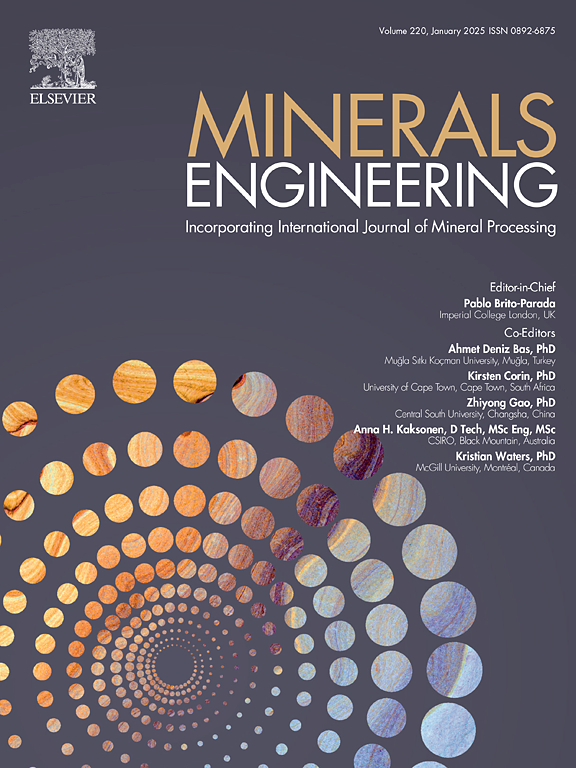煤矸石基酸性矿山废水污染物去除吸附剂的合成与表征
IF 5
2区 工程技术
Q1 ENGINEERING, CHEMICAL
引用次数: 0
摘要
本研究旨在利用固体煤矸石和膨胀粘土制备一种吸附材料,以去除酸性矿井废水中的污染物。选取巴西圣卡塔琳娜州南部地区煤炭开采的固体残渣和同一地区的粘土进行吸附剂合成。合成过程采用全32因子试验设计,不同组分(纯煤矸石、混合料和纯粘土)、粒度(细粒(88 μm≤D≤250 μm)、介质(250 μm≤D <;(840 ωm≤D <;2.380 μm)和质量,共进行了36次试验。结果表明,所开发的吸附剂对铁离子具有显著的吸附能力,少量吸附剂对铁离子的去除率接近100%。对于镍离子,最好的结果表明这种重金属的浓度降低了大约40%。锌离子浓度降低约77%。在所有情况下,本研究中开发的吸附剂在吸附能力上优于商用活性炭。此外,吸附剂的粒径对吸附性能有显著影响,粒径越小,吸附容量越大,这可能是由于吸附剂的表面积越大。本文章由计算机程序翻译,如有差异,请以英文原文为准。
Synthesis and characterization of a clay-coal waste-based adsorbent for contaminant removal from acid mine drainage
This study aims to develop an adsorbent material from solid coal waste and expanded clay to remove contaminants from acid mine drainage (AMD). A solid residue from coal extraction in the southern region of Santa Catarina, Brazil, and a clay from the same region were selected for the adsorbent synthesis. The synthesis process followed a full 32 factorial experimental design, varying composition (pure coal waste, mixture and, pure clay), particle size (fine (88 μm ≤ D ≤ 250 μm), medium (250 μm ≤ D < 840 μm), and coarse (840 ωm ≤ D < 2.380 μm), and mass, resulting in 36 tests. The results demonstrated that the developed adsorbents exhibited significant adsorption capacity for iron ions, with nearly 100 % removal of this contaminant using small quantities of adsorbent. For nickel ions, the best results showed approximately a 40 % reduction in the concentration of this heavy metal. Zinc ion concentrations were reduced by about 77 %. In all cases, the adsorbents developed in this study outperformed commercial activated carbon in adsorption capacity. Furthermore, the particle size of the adsorbents had a notable impact on adsorption performance, with smaller particle sizes leading to increased adsorption capacity, which can be attributed to the larger surface area.
求助全文
通过发布文献求助,成功后即可免费获取论文全文。
去求助
来源期刊

Minerals Engineering
工程技术-工程:化工
CiteScore
8.70
自引率
18.80%
发文量
519
审稿时长
81 days
期刊介绍:
The purpose of the journal is to provide for the rapid publication of topical papers featuring the latest developments in the allied fields of mineral processing and extractive metallurgy. Its wide ranging coverage of research and practical (operating) topics includes physical separation methods, such as comminution, flotation concentration and dewatering, chemical methods such as bio-, hydro-, and electro-metallurgy, analytical techniques, process control, simulation and instrumentation, and mineralogical aspects of processing. Environmental issues, particularly those pertaining to sustainable development, will also be strongly covered.
 求助内容:
求助内容: 应助结果提醒方式:
应助结果提醒方式:


